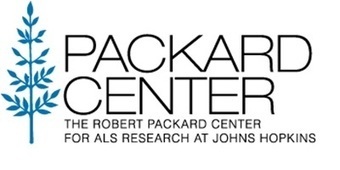Via Scoop.it – ALS Lou Gehrig’s Disease
 The ALS Association and the Robert Packard Center for ALS Research at Johns Hopkinshave entered into a partnership to expedite the development of animal model systems to expand the knowledge about the C9ORF72 gene, which has been identified as the most common cause of inherited amyotrophic lateral sclerosis (ALS or Lou Gehrig’s Disease) and Frontotemporal dementia (FTD).“The Association is very pleased to partner with the Packard Center to expedite these important studies,” said ALS Association Chief Scientist Lucie Bruijn, Ph.D. “The Association along with the Packard Center have both invested significant funds into the identification of this new gene, and we are pleased to be able to work together to support the critical next steps to ensure that possible discoveries from these projects are translated as rapidly as possible into therapies for ALS. In October, 2011, a large expansion of a hexanucleotide GGGGCC repeat was discovered in the C9ORF72 gene, but how the expansion causes malfunction of the nerve cells in ALS and FTD remains unknown. It is thought that the messenger RNA (mRNA) derived from this large repeat aberrantly accumulates. This scenario is reminiscent of what is known in other diseases caused by expanded repeats, especially myotonic dystrophy. Building on that example and in partnership with Isis Pharmaceuticals, the Cleveland Laboratory in San Diego, Calif., has designed a gene silencing approach to develop a drug called an antisense oligonucleotide (ASO) that will selectively destroy the ALS-causing mRNA with the expanded repeat. Essential for drug development is a mouse model expressing the expanded human C9ORF72 mRNA. The investigators will build these models and use them to validate efficacy of the ASO drug.
The ALS Association and the Robert Packard Center for ALS Research at Johns Hopkinshave entered into a partnership to expedite the development of animal model systems to expand the knowledge about the C9ORF72 gene, which has been identified as the most common cause of inherited amyotrophic lateral sclerosis (ALS or Lou Gehrig’s Disease) and Frontotemporal dementia (FTD).“The Association is very pleased to partner with the Packard Center to expedite these important studies,” said ALS Association Chief Scientist Lucie Bruijn, Ph.D. “The Association along with the Packard Center have both invested significant funds into the identification of this new gene, and we are pleased to be able to work together to support the critical next steps to ensure that possible discoveries from these projects are translated as rapidly as possible into therapies for ALS. In October, 2011, a large expansion of a hexanucleotide GGGGCC repeat was discovered in the C9ORF72 gene, but how the expansion causes malfunction of the nerve cells in ALS and FTD remains unknown. It is thought that the messenger RNA (mRNA) derived from this large repeat aberrantly accumulates. This scenario is reminiscent of what is known in other diseases caused by expanded repeats, especially myotonic dystrophy. Building on that example and in partnership with Isis Pharmaceuticals, the Cleveland Laboratory in San Diego, Calif., has designed a gene silencing approach to develop a drug called an antisense oligonucleotide (ASO) that will selectively destroy the ALS-causing mRNA with the expanded repeat. Essential for drug development is a mouse model expressing the expanded human C9ORF72 mRNA. The investigators will build these models and use them to validate efficacy of the ASO drug.
Via www.alscenter.org

